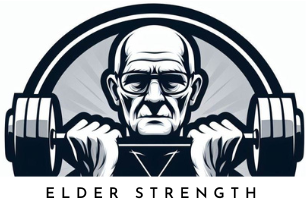Welcome friend! If you are looking for information on Tai-Chi and seniors, you’ve come to the right place. This is the most comprehensive resource about tai-chi for seniors online!
Tai-Chi is a traditional form of exercise that is also often considered a martial art or even as a spiritual or mental practice. It’s a bit like yoga in that sense.
But that’s not where similarities between yoga and Tai-Chi end. Where yoga is more about improving mobility and body control by achieving and staying in positions, Tai-Chi is more about fluid and controlled movement.
Both practices are focused on mindful attention and intention of movement and controlled breathing. There are many different schools of both practices, some more dynamic than others.
What sets Tai-Chi clearly different from yoga is the connection with martial arts. Many of the movement patterns in Tai-Chi are based on martial art movement patterns and it aims to combine mindful movement meditation with self-defense.
Tai-Chi has become popular in the west in the past decades and there are Tai Chi groups in most cities. It’s often seen as an alternative to yoga and some forms of Tai-Chi are often recommended for seniors.
But is Tai-Chi good for seniors? Are there safety considerations? Read on to find out!
What Is Tai-Chi
Before we talk about the benefits of Tai-Chi for seniors, it’s important to understand what Tai-Chi actually is. Many people think it’s a form of martial art but it’s actually more than that.
Tai Chi has a very long history and it’s important to understand the main principles behind Tai Chi before we can talk about its benefits for seniors.
While Tai-Chi is often talked about as a martial art, many of the modern forms are actually more about achieving relaxation and mindfulness through attention to movement.
Tai-Chi is based on the concept of yin and yang, the duality in everything. Meaning there is a counterforce to every force and a counter-movement to every movement. In Tai-Chi this can be thought in every dimension of movement: Backward – forward, up – down, defence – attack, left – right, inhale – exhale, internal – external, and so on.
Let’s start with a quick look at the history of Tai-Chi!
History Of Taichi
As you might have guessed, Tai-Chi (also known as Taiji, Taijiquan, Tai-Chi Chuan, and Shadow Boxing) originates from China. There is no clear date for the conception of Tai-Chi since the first records of similar practices are from Taoist and Buddhist monasteries dating all the way back to the 12th century.
Tai-Chi is based on Qigong and different martial art techniques that reach back thousands of years. There are several styles of Tai-Chi, so as you can see the backgrounds of this practice is vast and variable.
Qigong is a form of movement meditation and it literally means energy work, Qi meaning life force. It involves coordinated breathing and movement patterns and the aim is to improve mental, physical, and spiritual well-being. Tai-Chi is essentially an extension of this practice with an addition of larger movement patterns based more on martial arts that are used for self-defense.
The origins of Tai Chi Chuan dates to around the 13th century AD to the Chang family. Chan Sang-Feng created a martial art based on the observation of animals and the practice passed in the family for generations.
In the early 1800s, Yang Lu-Chan was taught this martial art by the Chang family. Yang created his own version of martial art by modifying the movements and merging the practice with Taoist philosophy, giving the birth to Yang style modern Tai-Chi.
Before the 19th Tai-Chi likely had many other names as it appears it was named Tai-Chi around the mid-19th century after when the modern form of Tai-Chi was standardized to some extent by Yang Lu-Chans grandson Yang Chen-Fu. He simplified the practice to promote physical health.
Tai Chi can be translated to mean “Supreme Principle”, which reflects the holistic nature of the practice. It’s not considered merely as a sport, but a philosophy that combines physical movement with a quest for inner peace.
On the other hand, Tai Chi Chuan means literally “supreme ultimate fist”, which reflects its roots as a martial art.
Styles Of Tai-Chi
There are several styles of Tai Chi these days, let’s look at the most common ones so you can spot the difference in your local groups.
Yang
Yang style Tai Chi is the most traditional and popular form of Tai Chi Chuan around the world. It’s based on the teaching of the Chan family. Yang style involves sweeping, graceful, and slow movements, making it easy for beginners and people of any age. Yang style is what you typically see people doing in parks.
Yang style focuses more on the internal aspects of tai chi than the physical, so focusing on the movements and breathing is key. On the other hand, the Yang style doesn’t involve fast dynamic movements like jumps. Yang style is generally easy to approach as a beginner and it is suitable for seniors.
Chen
Chen style is the original Tai Chi style that gave birth to all the other styles.
There are a couple of major differences between Yang and Chen style Tai Chi. Mainly in Chen style the speed and force of movement vary more than in Yang style, making it a bit more physical. The third major difference is the silk reeling movement practice in Chen, which is a bit too complicated a topic to explain here, but if you want to learn more about it, check out this great article by Don Tow.
Wu
Wu style Tai Chi is the second most popular form of Tai Chi in the world these days and it’s named after the Wu family. Wu style is derived directly from the Yang style and the routines are very similar. The main difference is that in Wu style the steps are staller the used stances are taller, which makes it easier to perform for beginners and seniors. So Wu style alongside Yang style is the perfect style of Tai Chi for seniors.
Sun
The Sun style was developed from the Wu style and is the youngest of the major styles. Itäs named after its developer Sun Lu-tang. The main characteristic of Sun style is the feet following each other. Through the entire set, when one foot moves the other follows. Sun style focuses especially on Qi, so if you are interested in the more philosophical or spiritual side of Tai Chi, Sun could be the perfect fit.
Benefits Of Tai-Chi For Senior Citizens
So is Tai Chi beneficial and suitable for seniors? Yes, it definitely is.
Tai Chi has actually been studied extensively and the studies have shown improvements in balance and coordination with a reduction in falls for seniors.
This makes perfect sense when you think about how Tai Chi is performed. You perform slow controlled movements in space with focus and relaxation. This is the perfect kind of exercise for improving coordination and balance for seniors.
Your balance deteriorates rapidly as you age if you don’t take good care of it, so any kind of exercise that challenges your balance is beneficial. With Tai Chi, there is very little risk of falling down and it’s very low impact so it’s perfect for most seniors.
That said, it’s important to realize that you also need lower body strength and mobility for good balance skills. While Tai Chi can help improve and maintain those as well, strength training is likely superior for this.
Strength training is also the best way to improve and maintain muscle mass, which is very important as you age. That’s why I recommend you combine Tai Chi with strength training and some form of cardio, like daily walking or jogging, to take care of your cardiovascular health.
The mindful and controlled movement can also help with both physical and mental health. For example, lower back pain and joint pain can reduce in some cases from Tai Chi. It’s also possible to aggravate these problems, depending on the cause and how gradually you introduce Tai Chi into your practice.
Is Tai-Chi Religious Or Spiritual?
So as we established before, Tai Chi has a philosophical or even spiritual background, based on the concepts of Qigong and Ying and Yang.
If you are worried to try Tai Chi in case it’s a cult of some sort, let me ease your mind. Tai Chi, especially in its modern form is not religious, so you don’t need to worry about getting pressurized into any religious activities that might go against your personal world views.
While it might seem there’s a lot of mysticism involved with Tai Chi that’s not actually true in most places that teach the practice. While the concepts of Qi, Ying, and Yang go with the tradition, they can be simply understood as philosophy. You can participate, enjoy and get the benefits of Tai Chi without thinking about them.
That said, a big part of the practice is mindful attention to the movement patterns and your breathing. This makes Tai Chi a form of mindfulness or meditation, which has been shown to be very beneficial for mental health.
Some people can feel there is a spiritual side to meditation and it’s everyone’s right to decide how they view these practices.
Is Tai-Chi Good For Self Defence?
You might be wondering if Tai-Chi is good for improving self-defense skills and feeling of safety since it’s a martial art.
The truth is that modern forms of Tai Chi, like Yang style, are not likely optimal for improving self-defense skills. If you master Tai-Chi, you will without a doubt have superior body control that can help in many forms of self-defense but the focus of the practice is not on developing actual self-defense skills.
Self-defense is a complicated subject that consists of psychology, physical fitness, and self-defense skills. Tai-Chi does not typically teach you how to fight effectively or to react under pressure and threat, making it a poor choice for actual self-defense skills.
Practices that are aimed at effective fighting, like Krav Maga, will likely give you superior skills for self-defense.
Conclusion
I hope you found this article about Tai Chi useful and it answered most of your questions about the subject. If you have any additional questions, feel free to leave them in the comments section below and I’ll do my best to answer you.
Tai Chi is a great form of exercise for seniors because of the gentle movement patterns that involve the whole body. Tai Chi is great for improving balance and muscle control, making it beneficial for balance skills and physical health.
Tai Chi can also have benefits for mental health due to the relaxing, meditative nature of the exercise. It’s also a great way to meet interesting people or to have some fun exercise with a friend.
I recommend you combine Tai Chi with some form of strength training, to help you maintain muscle strength and mass. Tai Chi likely has some benefits for muscle strength but because the movements are slow and there is no external resistance, it’s likely not optimal for improving and maintaining muscle mass. Which is one of the most beneficial things you can do for your health as a senior.
Even though Tai Chi is often categorized as a martial art, it’s not actually very good for self-defense due to the lack of actual sparring in most styles. It can still improve your confidence and make you feel more secure in your body due to improve body control.
That’s it for today, thanks for reading, and see you next time!
P.S. If you find this article useful, remember to share it with friends on social media!

